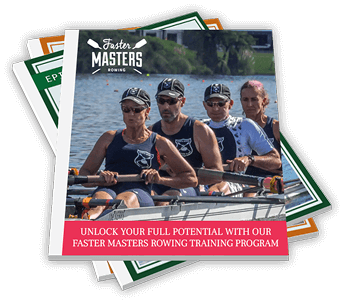As the sport of rowing continues to grow in popularity among older athletes, the need for effective and safe flexibility training becomes increasingly important. One method that stands out is Active Isolated Stretching (AIS), a technique designed to improve muscle elasticity, joint range of motion, and overall athletic performance. For older rowers, incorporating AIS into their training regimen can help enhance rowing efficiency, prevent injuries, and maintain long-term physical health.
What is Active Isolated Stretching?
Active Isolated Stretching is a technique developed by kinesiotherapist Aaron Mattes. Unlike traditional static stretching, where a muscle is held in a stretched position for an extended period, AIS involves holding each stretch for only 2-3 seconds. This brief duration allows the muscle to relax and lengthen without triggering the body's protective reflex that prevents overstretching, known as the myotatic reflex. By isolating specific muscles and using gentle, controlled movements, AIS effectively enhances flexibility without causing strain.
Benefits of AIS for Older Rowers
1. Improved Flexibility and Range of Motion: Flexibility naturally decreases with age, and for older rowers, maintaining a wide range of motion is essential for effective strokes and overall technique. AIS helps in maintaining and even improving flexibility by focusing on specific muscle groups used in rowing, such as the hamstrings, hip flexors, and shoulders. This increased range of motion can lead to more efficient strokes and reduced strain on the body.
2. Injury Prevention: Rowing is a repetitive, full-body activity that places significant demands on the muscles and joints. For older athletes, the risk of injury can be higher due to decreased muscle elasticity and joint stiffness. AIS targets these areas, helping to alleviate tightness and reduce the risk of common rowing-related injuries, such as lower back pain, shoulder impingements, and hamstring strains. By incorporating AIS into their routine, older rowers can maintain a balanced and injury-resistant body.
3. Enhanced Muscle Recovery: Recovery becomes increasingly important as athletes age, and AIS plays a crucial role in this process. The short, repetitive stretches of AIS promote blood circulation, helping to deliver oxygen and nutrients to the muscles while removing metabolic waste products like lactic acid. This increased circulation aids in faster recovery, reducing muscle soreness and stiffness after intense rowing sessions.
4. Customizable and Accessible: AIS is highly adaptable, making it an excellent choice for older athletes with varying levels of flexibility and strength. The stretches can be easily modified to accommodate individual needs, ensuring that each athlete can perform them safely and effectively. Additionally, AIS requires minimal equipment—typically just a stretch rope—making it a convenient option for athletes to incorporate into their daily routine, whether at home or the gym.
5 AIS stretches for rowers
- Hamstring
- Hip Flexor
- Quadriceps
- Thoracic Spine Rotation
- Shoulder Extension
Phil Wharton is a runner and physiotherapist - he demonstrates several AIS stretches here.
How to Incorporate AIS into Rowing Training
For masters rowers, incorporating AIS into a training routine can be straightforward and highly beneficial. It's recommended both before and after rowing sessions. Pre-rowing AIS can serve as a dynamic warm-up, preparing the muscles for the demands of the sport. Post-rowing, AIS can relax and lengthen the muscles after practice.
A typical AIS session for rowers might include stretches targeting the hamstrings, quadriceps, hip flexors, glutes, shoulders, and upper back. Each stretch should be performed for 1-2 sets of 10-12 repetitions, holding each stretch for 2-3 seconds. Remember to breathe deeply and move gently into each stretch, focusing on the quality of movement rather than the intensity.

